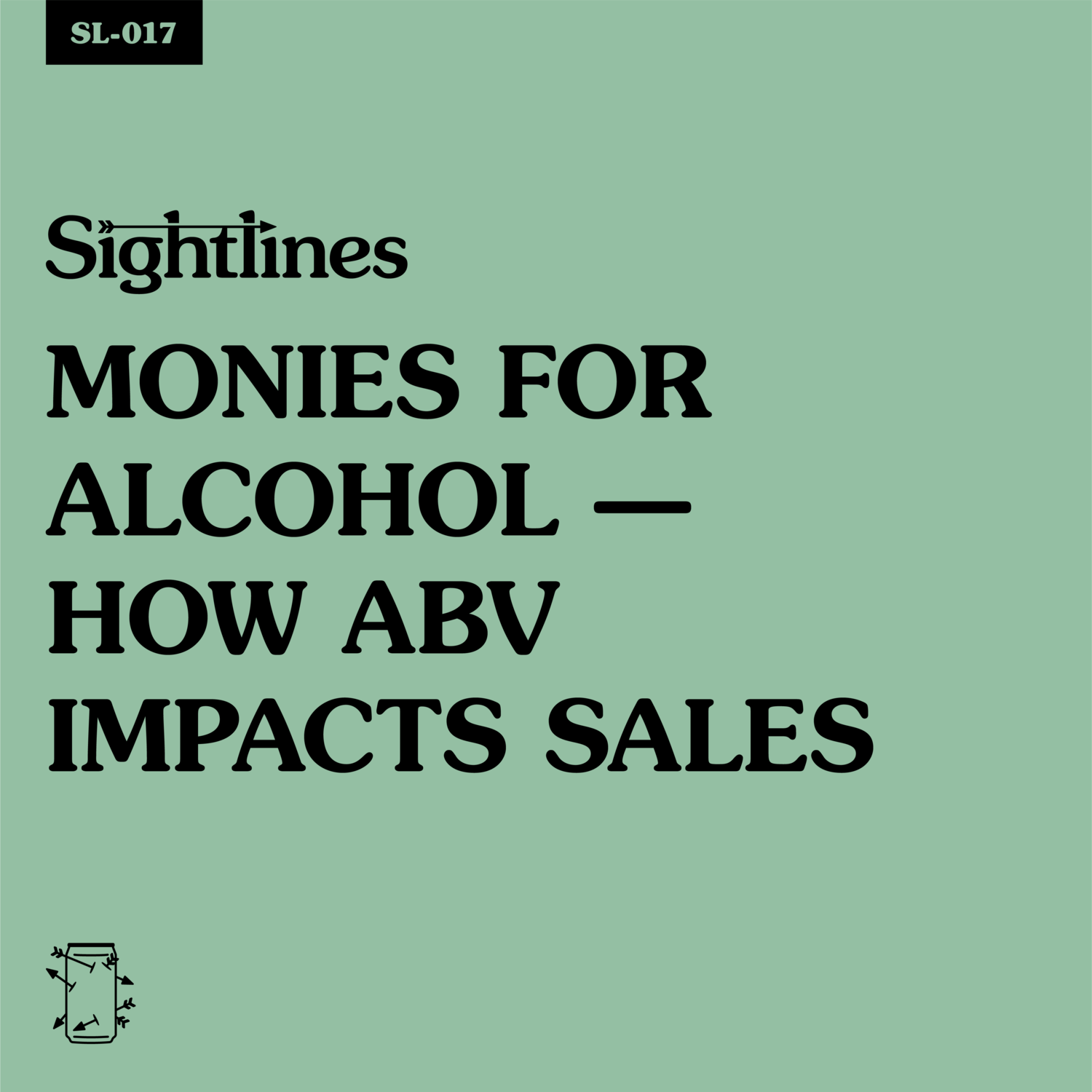SL-017 Monies for Alcohol How ABV Impacts Sales

Here\u2019s an odd thing that enthusiasts don\u2019t always focus on when talking about beer, or wine, or spirits, or whichever hard seltzer brand we happen to be enjoying in the moment: they\u2019re vehicles for alcohol. There may be tasting notes scribbled down or spoken aloud, and we may stop to reflect on what we just sipped, but the pure, biological impact isn\u2019t always discussed when we\u2019re quaffing something intoxicating. The moment you take your first sip, that ethanol-infused liquid is altering your body chemistry.
This is no surprise. We see the Alcohol By Volume\u2014ABV\u2014listed on the drinks we consume and feel it in our bodies. In the simplest terms, courtesy of Wikipedia: ABV is a \u201cstandard measure of how much alcohol (ethanol) is contained in a given volume of an alcoholic beverage (expressed as a volume percent).\u201d In beer, a serving size is 12oz, and it\u2019s easy to find a range of ABVs, from a 4% Gose to a 7% IPA, all the way up to a 12% Imperial Stout or a beer that really pushes the limits, like Dogfish Head Brewery\u2019s 120 Minute IPA, which measures in at 18%. The higher the ABV, the more ethanol, and the stronger the impact each drink has on our brain and motor functions.
In casual and on-the-record conversations over the past year, I\u2019ve been chatting with beer industry professionals about ABV and their impressions of its impact on the marketplace, related to sales and to consumer desires. There are all sorts of scenarios to weigh up\u2014maybe you\u2019re at a taproom, or strolling through your grocery store beer aisle. What are you thinking about? The occasion you\u2019re going to have that beer? Who you\u2019re with? What\u2019s the time of day?
In one way or another, these considerations will likely make you consider the alcohol content of the beer you\u2019re going to drink. Interestingly, in many of those chats I had with brewers and brewery owners, I kept hearing about an interest in higher-ABV products.
But how can that be? The past year has been full of stories on Good Beer Hunting and elsewhere about the rise of lower-ABV brands, or \u201cbetter-for-you\u201d products like Michelob Ultra (with an ABV of 4.2%) and Dogfish Head\u2019s Slightly Mighty IPA, a 4% \u201clo-cal\u201d India Pale Ale. On a monthly basis in 2019, local and national media outlets have been pumping out stories about a grand shift toward lower-ABV and lower-calorie beers. Which isn\u2019t false. It\u2019s also just not entirely true.
In a GBH Sightlines story from September, it was shown that almost all growth from in-store beer sales has come from higher-ABV brands, and it\u2019s a shift that\u2019s been happening for years. And just recently in November, more analysis showed a rising ABV level for some of the best-selling Stouts as weather got colder toward the end of each year.
So while all these narratives can take place at the same time, together they create a complex conversation about the aspect of craft beer that we don\u2019t often discuss. That alcohol content? It\u2019s got consequences.